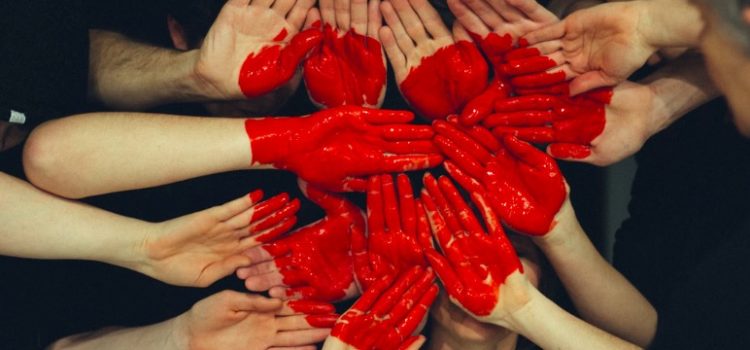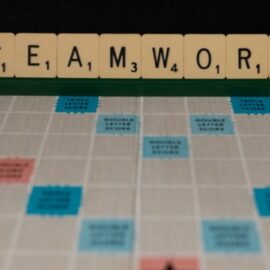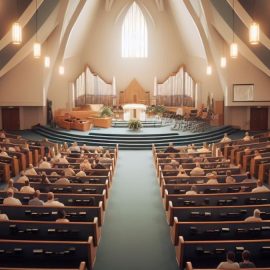
Have you ever wondered how to establish a new community? What kind of guidelines does a community need?
Building a community requires establishing the fundamental components that bring your community together. In The Art of Community, Charles Vogl defines what a community is and discusses the three basic building blocks of a community.
Keep reading to learn how to build a community that brings people together.
What Exactly Is a Community?
According to Vogl, a community is a formal or informal collective of people who care about each other and support each other’s growth. Communities demonstrate care by fostering relationships between members, which creates a sense of belonging (the feeling that others welcome and value you). They support members’ growth by sharpening their skills and helping them refine their character.
Care and mutual support are the most basic requirements of learning how to build a community, but Vogl explains that as a community develops, it develops a few other key features, too.
First, community members honor a common moral code. Vogl says people join communities because they want to be near people who care about the same things they do—for example, you might join a book group because you value literature and want to explore it with like-minded people.
A community’s ethical beliefs also tend to guide members’ behavior: Within a community that shares certain values, you’re more likely to devote time to the causes you care about, and there can be negative consequences when you fall short of community standards. For example, if you’re unfriendly to someone in your book club because they enjoy a different genre than you do, other members might question what you truly value and might even leave the community if the problem seems widespread.
Second, membership in the community comprises part of your identity. Vogl explains that when the moral code you share with your community guides your thinking and behavior, your self-perception changes: You see yourself as a particular kind of person (the kind who belongs to that particular community and honors its moral code). When your community is together, members support each other in being the kind of people you’d like to be.
Finally, as a result of the other two features, people within a community just get each other. Vogl explains that since you share a moral code, behavioral standards, and aspects of your identity, you naturally relate to and empathize with each other, and you’re at ease in each other’s company. To illustrate, LGBT people often value being part of an LGBT community because they don’t have to explain their gender and sexuality-related experiences in that community the way they do among cisgender and straight people.
1. Adopting Healthy Guidelines
Vogl explains that communities should adopt healthy guidelines to protect the community from negative influences and stagnation.
One guideline is that leaders should protect their communities from their own shortcomings and from the shortcomings of poorly performing members. Vogl explains that leaders can protect communities from their own shortcomings by prioritizing the success of the entire community over their personal success. This means respecting the limits of their authority, not encroaching on any member’s freedom to participate voluntarily and to enjoy other parts of life, and being accountable for their actions. To protect their communities from poorly performing members, leaders should keep abreast of and hand down consequences for inappropriate behavior.
(Shortform note: In Leaders Eat Last, Simon Sinek explains why leaders must protect their communities from potential threats (including themselves). Sinek says that being in a safe group environment produces the neurochemical oxytocin, while being in a stressful group environment produces the hormone cortisol. Oxytocin boosts your sense of trust, which makes you more likely to interact positively and collaborate with others in your community—overall, this contributes to greater group productivity and, in a corporate context, profitability. Cortisol, on the other hand, impedes your ability to produce oxytocin and makes you see others in your community as a threat—this reduces your capacity for collaboration and productivity.)
Another guideline is that a community’s moral code should be somewhat pliable. Vogl says this doesn’t mean members should readily abandon their morals, but that they should be empowered to respectfully question and even disagree with commonly held beliefs. If consensus follows disagreement, it may reaffirm their commitment to their moral code, or they may settle on a new moral code that more accurately represents them. This may be necessary when the old moral code is now considered bigoted. If differences can’t be reconciled, some members may depart and form a new community—Vogl says that’s OK because it allows each group to honor their disparate values without perpetuating a state of intra-group conflict that disrupts bonding and cooperation.
(Shortform note: In The Coddling of the American Mind, Greg Lukianoff and Jonathan Haidt argue that university communities discourage disagreement about their moral codes. They say that this happens because young people tend to see the world in black and white, use emotional reasoning, and believe in avoiding adversity—altogether, this results in pressure to keep the community “safe” by censoring dissenting opinions. If your community struggles with this problem, you might adopt their advice for cultivating antifragility within your community. Lukianoff and Haidt say you can cultivate antifragility by promoting independence and freedom of thought, acknowledging shades of gray, and prioritizing logic over emotion.)
2. Choosing a Suitable Meeting Place
Vogl explains that every community needs a meeting place (what Vogl calls the Temple Principle) where members can come together, enjoy each other’s company, and help each other pursue goals based on their shared moral code. A meeting place can be a traditional structure or a makeshift hangout spot. A large community may have more than one meeting place. For example, think of the global community of yoga practitioners: There are a number of traditional studios where practitioners can meet, and a small, informal group of practitioners might create a temporary meeting place by devoting one member’s living room to a yoga session. A meeting place can even be online (like a social media group for yoga practitioners).
The physical characteristics of a meeting place impact the emotional resonance of any gathering. For example, it might be more meaningful to hold a family reunion in a relative’s home that’s full of family memorabilia than in a restaurant no one has any emotional attachment to. For online communities, this doesn’t typically apply—but Vogl recommends holding offline meetings every so often to enhance members’ connections with one another.
Vogl says that if you want to make a temporary meeting place special, you should consider six factors:
1) Who will occupy the space? Vogl explains that a meeting place is made special when the right people are in attendance, so you should specifically request their presence there. For example, you might send out paper invitations for a special event at your meeting place.
2) What attire will people wear in the space? Vogl says that when people wear distinctive kinds of clothing, it marks a place and occasion as unique in some way. For example, sports fans often wear apparel representing their favorite teams when they gather for games.
3) How can meaningful elements be elevated in the space? Vogl says that to draw attention to meaningful elements (like guests of honor), you may want to physically elevate them. For example, in the US, newlyweds sometimes sit at a table upon a raised platform at their wedding receptions.
4) How does sound work in the space? Vogl explains that many communities use silence, music, or speech to create meaningful moments, so you want to ensure that the space can accommodate your sound-related needs.
5) How is the space lit? According to Vogl, if you want to draw attention to something, you should ensure that it’s well-lit, while keeping less important aspects of the environment relatively darker.
6) How is the space contained? Vogl says that to ensure a meeting place is special, it should be separated from the ordinary world by a physical marker. For example, some Wiccans use salt, candles, and other items to temporarily create a magic circle dividing their sacred space from the secular world.
3. Instituting Meaningful Customs
According to Vogl, communities must also institute formal and informal customs that mark meaningful moments (Vogl calls this the Rituals Principle). Common customs include celebrations of progress (like belt ceremonies in the martial arts), fun traditions (where communities engage in recreational activities together), cultural demonstrations (like ethnic food festivals), and moments of silence (especially when the community is in mourning). Customs can still happen in online communities—for example, an online craft community might hold a weekly “show off some work you’re proud of” activity.
Vogl explains that customs become meaningful when they’re repeated because repetition connects past, present, and future generations of the community. However, customs can change over time to suit newer generations’ needs—for example, family reunions might replace board games with video games. Nevertheless, customs usually follow a pattern (for instance, your community of coworkers might start each meeting by shouting out each other’s strengths and achievements before moving on to business matters).
Vogl recommends the following pattern as a basis for formal customs:
First, introduce the custom. This involves greeting participants, stating the purpose of the custom, reminding participants of previous times they practiced a custom (to help drive home meaningfulness), and giving an overview of what’s going to happen next so that each participant knows what to expect and understands any rules they have to follow.
Second, engage in the custom. Vogl recommends incorporating a few meaningful words at the start of the custom. For example, funerals often begin with a piece of scripture that provides comfort to mourners. Then, ask participants to engage in a group activity if they’re willing. Vogl notes that it’s better for the activity to have metaphorical meaning, rather than literal meaning, because this enables participants to come to their own personally meaningful conclusions about the activity’s significance.
Finally, conclude the custom by making a statement about what you’ve achieved with this custom and releasing participants from the custom or meeting place. Vogl explains that formally releasing participants helps them reorient themselves: They were doing something special, and now they’re returning to the more mundane parts of their lives.






